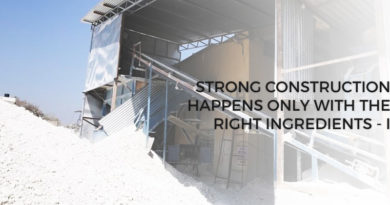SCIENTIFIC VASTU | BEFORE START OF CONSTRUCTION | An Architect Explains
It is recommended that before the start of the Construction of a House, one must be well prepared. The Vastu Guidelines explained here will enable one to be ready for the onerous task of construction of a House.

WHAT ARE THE VASTU GUIDELINES TO BE FOLLOWED BEFORE THE START OF CONSTRUCTION?
Before the start of the Construction of the Building, the following Vastu guidelines should be followed, in the order mentioned here. Since Vastu is a science, every guideline is based on logic and reasoning. As an Architect, I have attempted to explain each of these guidelines rationally and scientifically so that you have a choice and can decide what you want to follow or don’t instead of looking at Vastu as a superstition:
Determination of Site Orientation: The directions of the Site should be determined with the help of a Compass. If the axis of the Site is not parallel to the Earth’s magnetic axis (North-South axis), then the angle of tilt should be measured. All the corners of the plot should be 90 degree-aligned and the Compound wall should be constructed only after the proper alignment of the corners.
Clearing of Site: The next thing to be done is to clear the Site of all the dirt, stones, debris, thorny bushes, shrubs etc.
Vastu Pooja: After the Site is cleared, the first ritual to be done before starting the construction, is a Vastu pooja or Bhoomi Pooja. This is ritualistic and should be done at an auspicious time and on an auspicious day, as fixed by your astrologer. The pooja should be done in theNorth-East corner of the site.
Soil test: Two pits of size 2’x2’x2′ each should be dug at the Site, preferably in the place where the sump is going to be located. Fill up one of the pits with the dug-up soil. If some soil is left over after filling, the land isgood. If there is no soil left after filling up, it is average. If the hole is not fully filled, it is not good. Fill up the other pit with water. If the time taken to absorb the water is more than an hour, it is good. After the water is absorbed, if there are many cracks in the hole then it is not good.
Balidaana (Offertory ritual): Then the second ritual namely, Balidaana is done, wherein offerings are made and spirits and demons are requested to leave.

Hala -Karshana (Levelling os Site): This is followed by the third ritual called Hala-karshana. This is the levelling of the site, wherein the site is sloped according to Vastu guidelines for Site Slope, so that the site is at a higher level than the road level and the South-West corner is higher than the North-East corner. Vastu also recommends that the whole site be ploughed to rid it of the past and give the soil a new life. If the land contains any Wells or other depressions, they should be filled up and leveled.
Ankuraa-Roopana (Sowing of seed): The fourth ritual named Ankuraa-roopana wherein seed is sowed as a final offering to the memory of those who have left the place and is also the first offering to the new ploughed ground.

Digging of Borewell/Well: The next step is the digging of Well/Borewell for water for the construction at the point suggested by a Water diviner, preferably in the North-East corner, if there is a point here.
Construction of storage shed: After the Well/Borewell, the next step is the construction of the Storage Shed for storing building materials like Cement, Wood etc and also to be used as a house for a Watchman.
Construction of Sump: The next step is the excavation for an Underground Water tank also known as a Sump, near the front of the Site to facilitate easy connection from the Municipal Water supply pipes.

Compound Wall: After the construction of the Storage Shed and Sump, the next step is the construction of the Compound wall, to protect from the natural elements and from thieves.
Shilaanyaasa: It is the foundation laying ceremony. Trenches are dug for the foundation and the stone which is consecrated at the time of the Vastu Pooja, is laid first in the South-West corner of the trenches. The groundbreaking ceremony for the house should only be done during the Uttarayan period,from June 21 through December 20. when the sun is in the northern hemisphere.

Construction: One should start the construction of the House only after the above 12 steps have been followed. There is a scientific explanation for the Rituals that are done before the start of construction. They have been explained in:
If you found this post useful, all it takes is a simple click on the “pin it” “like,” “share,” “tweet,” or Google+ buttons below the post.
Related Topics:
- Vastu Shastra | Explained By An Architect
- Vastu Shastra | Principles For A House
- Vastu Shastra | Factors That Impact A House
- Vastu Guidelines | Designing A House
- Vastu Guidelines | Interiors Of A House
- Vastu Guidelines | Exteriors Of A House
- Vastu Guidelines | Selecting The Right Site
- Vastu Guidelines | Construction Of A House
- Vastu Guidelines | Rituals For A House
- Vastu Guidelines | Non-Residential Buildings
- Remedies For Vastu Defects





Dear sir
I live in southern hemisphere in New Zealand. I have heard the vastu rules are different.
Could pls explain or direct me where I can get not information.
Thanks.
Shaleshma Singh
very nice post with good intentions. This will really help the needful. Congratulations and heartfelt thanks for the wonderful post.
Hi,
Thank you for the appreciation and understanding.
Admin
Respected sir,
Is the vaastu should be followed or it is good if it is followed. For example it is said that if we dig a well in the northeast corner of the site…. What if site conditions…. Like water table does not suit well and water table is good in the opposite direction…. What can be done in this case…..
Today I have gone through your Vastu Tip and found it awesome. I intend to start construction work of my house in a couple of months for which I have to undergo foundation pooja within a fortnight.However, I learnt lot more from this post .Thanks to present such information and hope you will keep it up in future so that needy person like me may benefited.
Hi Badri,
I am glad that this post benefited you. Thanks for the appreciation.
admin
vastu tips for toilets & construction stages are describe in very simple way thanks you
Hi Bhikam Singh,
Thank you for the appreciation.
Admin
Dear sir
am currently building an house of 21*29 dhwajaya my father name narasimhaiah and mother nagarathna brother manjunath myaself naveen kumar. kindly let me know whether this aaya is good for all of us.
I have read here that uttarayana is from june 21 to December 20.
But I have heard that Uttarayana is from mid of January to mid of July.
I’m confused now….. Which is correct, Plzz explain.